https://www.youtube.com/watch?v=n5Q-4qSKTno
From Rare to Well-Done - Meat Temperatures for Perfect Steaks
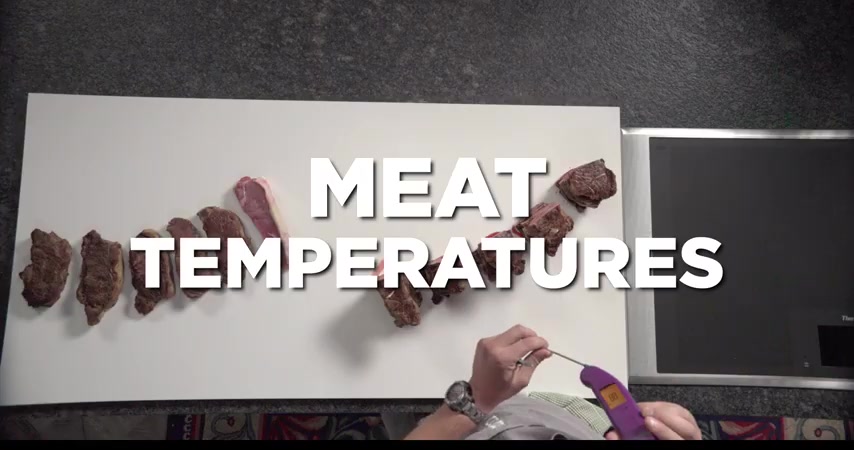
When it comes to taking the temperature of your beef .
Here's the deal .
There's a lot of practice that goes into it .
But there are a couple of simple steps you can follow to make sure you get it right .
Every time the first thing that we work on is touch .
Now , everyone's always saying you can touch your hand and then , you know , match it to the steak .
What does that really mean ?
Well , here's what happens when you start with a raw piece of meat , it's fairly stiff when you press on it , there's not a lot of give .
Then as the beef starts to heat up , it gets softer and softer .
And then as the temperature rises , it continues to get harder again .
So there are a range of textures that you can look for to figure out what temperature your beef is at more or less .
Let's take a look here .
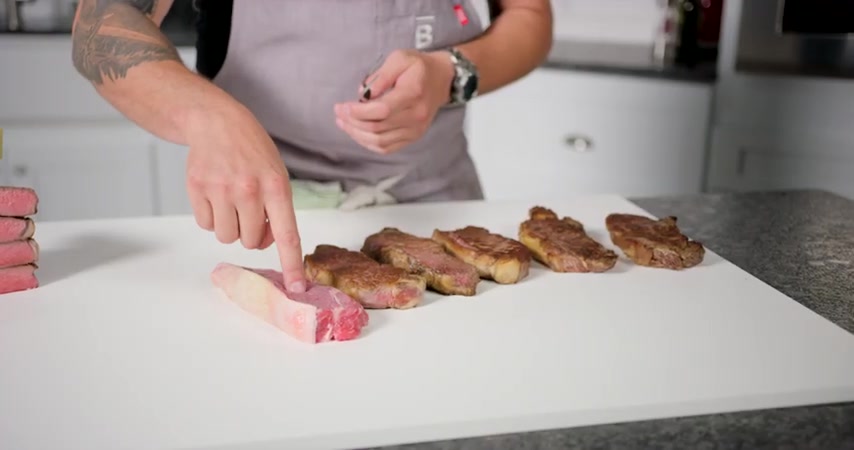
We have , first we have raw steak and I'm just going to push on that and you can see it's fairly stiff , there is some give on the surface , but once you get to the center , it's pretty solid .
Now moving on next to it we have a rare steak where the middle temperature of this steak is right around 115 F .
I'm going to press on that and you're going to notice pretty soft , pretty supple , it moves around .
It doesn't jump back from my touch .
Now , we have a medium rare steak where you're going to notice it's still pretty soft , but it comes back a little bit quicker .
So I press on that and you'll notice there's still some give , it's soft , but it tends to bounce back faster .
Then we have a medium steak , roughly 130 degrees .
A little bit higher , pressing on that .
You'll notice it's almost springy , comes right back to your finger .
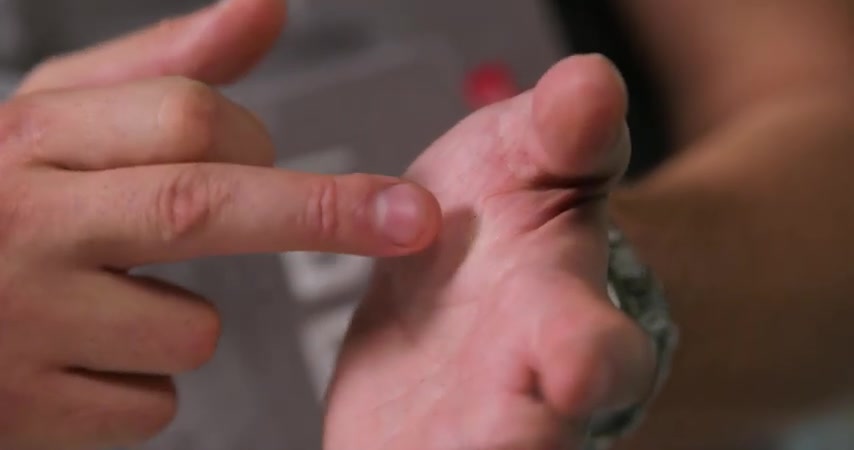
There's almost no sign that you pressed on it and then obviously it gets stiffer and stiffer .
So we're looking at a medium well , steak roughly 140 degrees or above pressing on that .
There's almost no give at all , but it's still got a little bit of texture to it .
And then finally a well done steak pretty solid .
Now , if you look at it on your hand , you've got this spot on your palm where it goes from soft , a little bit firmer , a little bit firmer all the way till it's very firm .
Those are sort of the range of textures that you're gonna find as you cook a steak .
Once you've cut into the steak , you're gonna notice some key distinctions .
Now , we're looking for two things , color and texture as far as texture goes when you cook from well done to rare , rare to well done .
There's a difference in muscle fibers with a rare steak .
You're gonna see long fibers .
There's a lot more moisture in there with a well done steak .
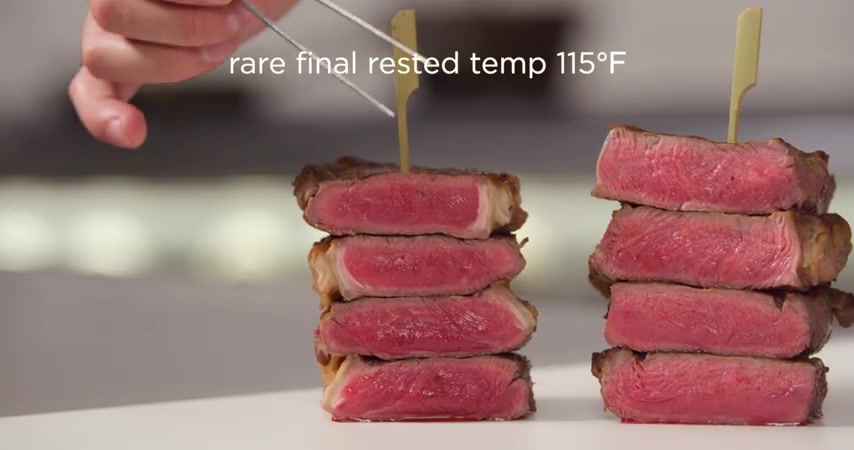
Very short fibers , a lot less moisture .
So let's take a look at the rare steak .
We have a rare steak over here , bright red in the center .
You can still see there's a lot of moisture in there really long , almost indistinct fibers because you barely cooked the inside .
We're looking at around 100 and 15 degrees and rising .
Now , moving on to the next steak , we have a medium rare steak .
It's cooked a little bit longer over 100 and 20 degrees .
And now you'll start to see distinct muscle fibers , a little bit less moisture .
But still you're looking at bright red color .
100 and 20 means it's gonna be warm inside , not burning hot .
So a warm red center is kind of what you want for a good medium rare .
Moving on .
We have medium now , medium is kind of that middle ground .
That sort of will please everybody .
Even an avid medium rare steak lover can go with a medium steak .
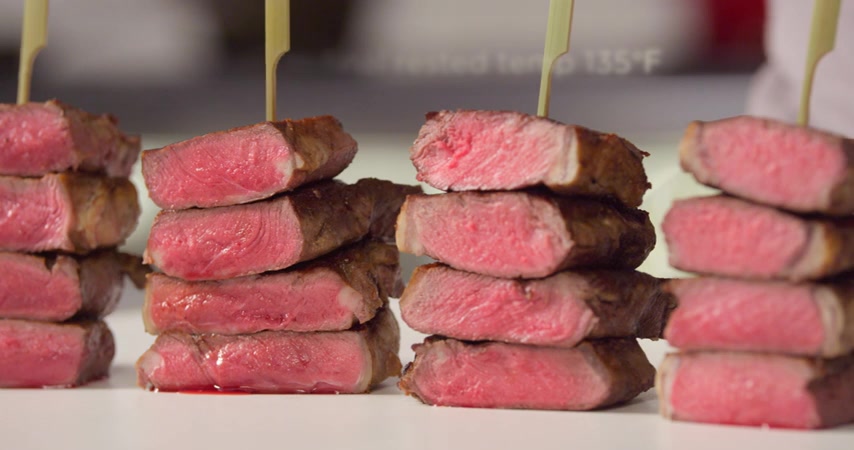
Now , that's because even though it's been cooked for longer , it still has a lot of moisture retained and you can see a little bit more distinct muscle fibers still has that bright red color .
A good medium steak over 130 degrees is going to have a hot red center .
Now , now we get into the danger zone .
Medium well , and well done .
A lot of people say never cook a steak this far .
But I say you can , if you do it carefully , let's look at the medium , well , shorter muscle fibers , a lot less moisture .
And we're looking at a distinct color change that's going from red to pinkish .
Now with a good medium .
Well , steak cooked over 100 and 40 degrees .
You're gonna have a hot pink center .
That's a perfect medium .
Well , it's still gonna be juicy .
It's still gonna be delicious .
It's just gonna be a little bit tighter when you chew it because less moisture , shorter muscle fibers .
And now finally we are at the well done steak .
Now , people typically think well done is bad .
People think well done means cooked through .
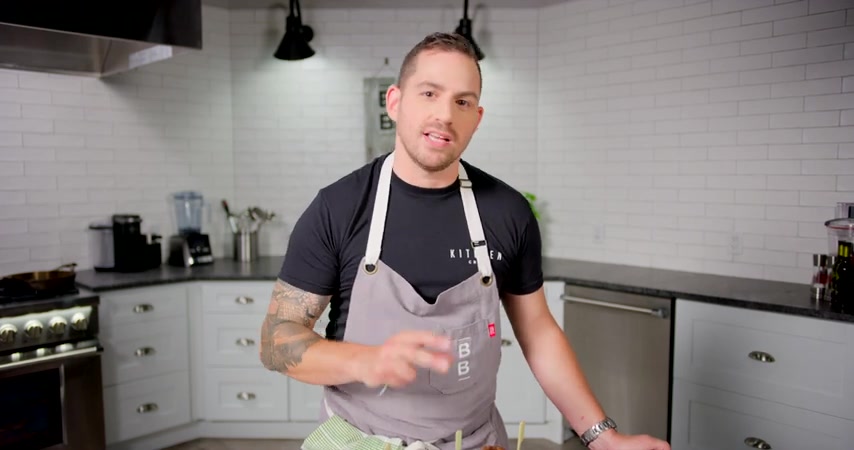
It's a rock , you can't bite into it .
I say not true .
You can still have a good well done steak .
And as you can see , it's still pink .
Now , this steak has been cooked 100 and 50 degrees .
Plus , I mean , when I cut it , it was probably 100 and 70 and yet you still see lots of that pink color .
There's still moisture in there .
Not as much as a medium rare , but still plenty of moisture for a good juicy bite .
And as you can see really short and distinct muscle fibers .
So remember when it comes to cooking the perfect steak , whether it's a well done steak or a rare steak , knowing when to pull it off the heat is key .
Of course , I have a secret weapon and that is my thermo pen .
This is a digital thermometer .
No more guesswork .
It tells you exactly what temperature is happening inside that steak .
Any digital thermometer is good .
I prefer this one because it has never led me wrong .
So go cook some steak .
Let me know how it turns out for you .
Are you looking for a way to reach a wider audience and get more views on your videos?
Our innovative video to text transcribing service can help you do just that.
We provide accurate transcriptions of your videos along with visual content that will help you attract new viewers and keep them engaged. Plus, our data analytics and ad campaign tools can help you monetize your content and maximize your revenue.
Let's partner up and take your video content to the next level!
Contact us today to learn more.